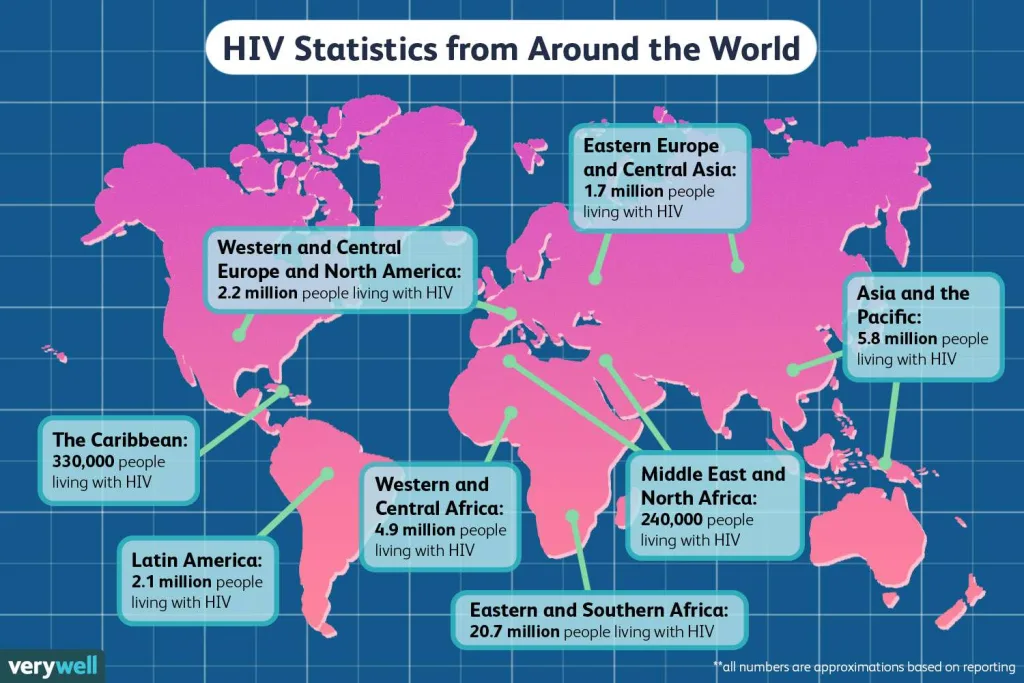London, UK – August 9, 2025
— The global fight against HIV/AIDS is at a critical juncture, with recent data from the World Health Organization (WHO) and UNAIDS highlighting a persistent and deadly reality. In 2021 alone, the virus claimed approximately 650,000 lives worldwide, a stark reminder that despite monumental scientific advances, the epidemic remains a significant public health challenge. A new CJ Global report, drawing on these international findings, emphasizes that the primary obstacle to ending AIDS is no longer a lack of knowledge or effective treatments, but rather a profound inequity in access to prevention and care. This disparity, fueled by social, economic, and political barriers, continues to condemn vulnerable populations to a preventable fate.
The number of deaths, while a significant reduction from the peak of the epidemic in the mid-2000s, underscores the urgent need to close the gap between what is possible and what is a reality for millions of people. The report notes that life-saving antiretroviral therapy (ART) has been available for decades, transforming HIV from a death sentence into a manageable chronic condition for those who can access it. However, a staggering number of people, particularly in low- and middle-income countries, still do not have access to these medications or to the preventive resources that could halt new infections. The data shows that while some regions, like Western Europe and North America, have largely achieved viral suppression for their populations, other areas, most notably sub-Saharan Africa, continue to bear the overwhelming burden of the epidemic. In 2021, over 67% of the 38.4 million people living with HIV globally were in sub-Saharan Africa, and the region accounted for a disproportionate share of new infections and deaths.

Equitable access to resources is crucial, but the CJ Global report finds that it is being systematically undermined by a variety of factors. One of the most significant is a lack of financial resources and health infrastructure in many of the hardest-hit countries. Poverty and financial constraints are a major barrier to seeking treatment, as individuals often cannot afford the costs of transportation to clinics or the time off work. Furthermore, a lack of robust healthcare infrastructure, particularly in rural and remote areas, means that clinics and trained healthcare professionals are often few and far between, forcing people to travel long distances for care. The report also highlights how a lack of health insurance and other forms of social protection leaves many people exposed to catastrophic health expenditures.
Another critical and often overlooked barrier is the persistent stigma and discrimination associated with HIV/AIDS. Despite decades of awareness campaigns, social stigma continues to prevent people from getting tested, seeking treatment, and disclosing their status. This fear of judgment, rejection, and violence creates a silent epidemic, pushing individuals to the margins of society and away from the very services designed to help them. A study cited in the report found that a lack of trust in healthcare providers due to fear of discrimination can lead to a delay in seeking care, late-stage diagnosis, and poor adherence to treatment. This is particularly true for key populations—such as men who have sex with men, transgender people, sex workers, and people who inject drugs—who face heightened levels of social and legal discrimination, which in turn increases their vulnerability to HIV.
The report also points to a critical disparity in access to prevention tools. While pre-exposure prophylaxis (PrEP), a medication that can effectively prevent HIV transmission, is widely available in many high-income countries, its uptake remains low in other parts of the world. This is often due to high costs, lack of awareness, and a lack of political will to implement large-scale prevention programs. Furthermore, the report finds that while there has been significant progress in developing new pediatric treatments, millions of children living with HIV still lack access to the life-saving medication they need. In 2022, UNAIDS estimated that 660,000 HIV-positive children still did not have access to treatment, highlighting a deep and unsettling inequity that leaves the youngest and most vulnerable behind.
To close these gaps, the CJ Global report calls for a concerted, multi-pronged global effort. This includes increasing investment in healthcare systems in low- and middle-income countries, reforming tax systems to ensure that the wealthy contribute their fair share, and developing innovative financing mechanisms to make life-saving drugs more affordable and accessible. The report also stresses the need for stronger legal protections against discrimination and a renewed commitment to public education campaigns to combat stigma. Ultimately, it argues that the fight against HIV/AIDS cannot be won with medicine alone; it requires addressing the social and economic injustices that continue to fuel the epidemic. The 650,000 lives lost in 2021 are not just a statistic; they are a tragic reminder that until equitable access is a reality for everyone, the promise of an AIDS-free world will remain just that—a promise.
